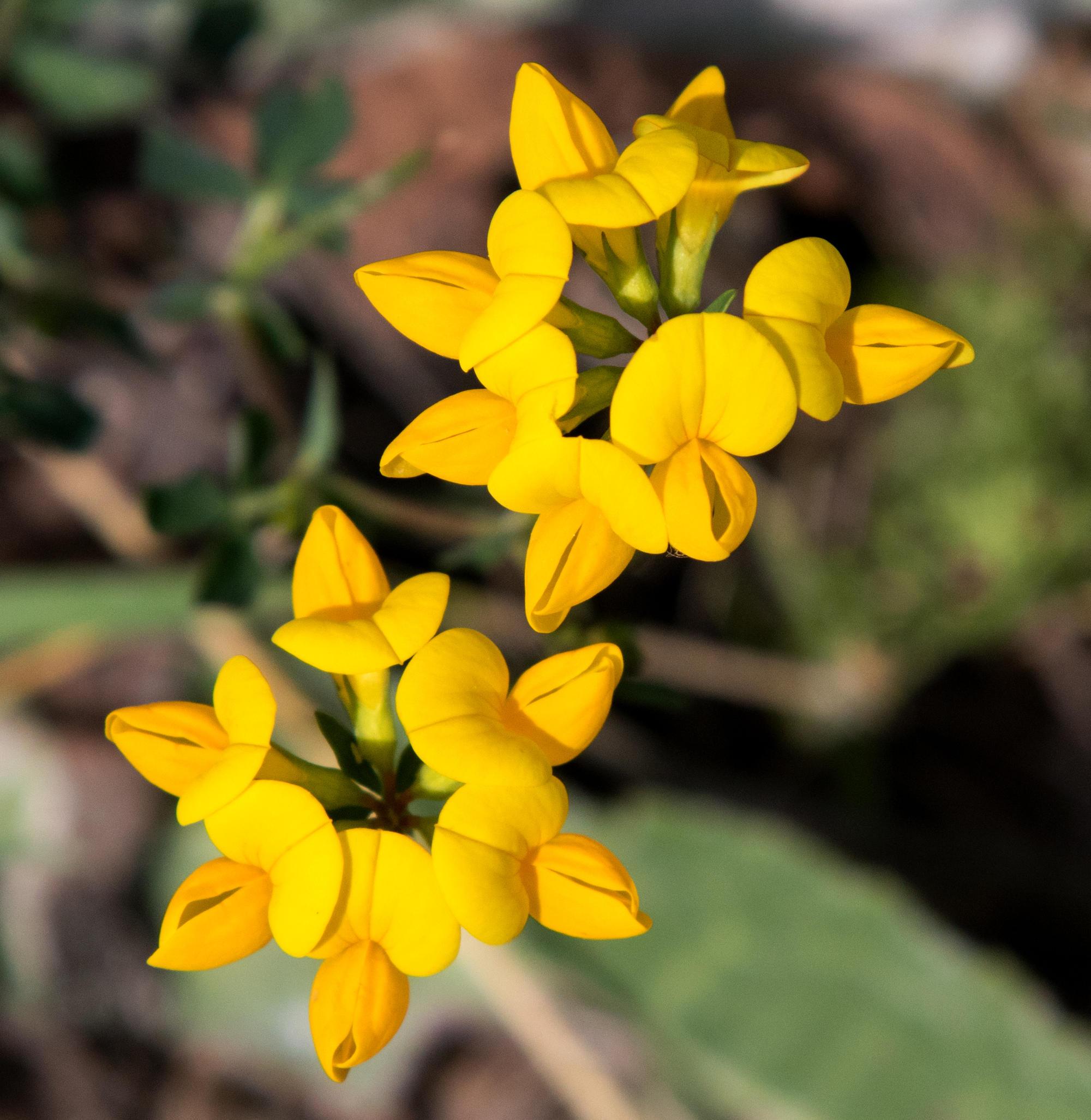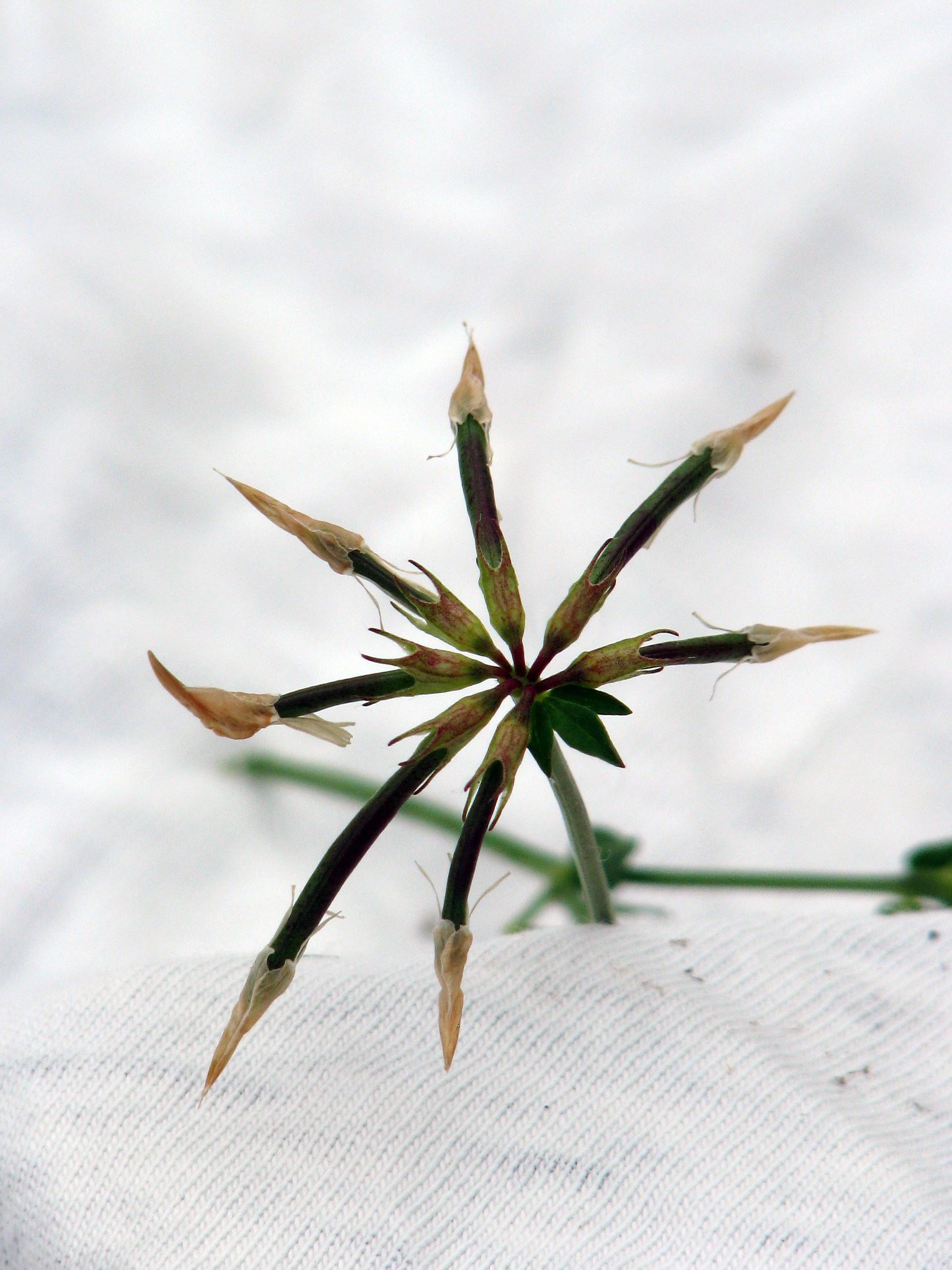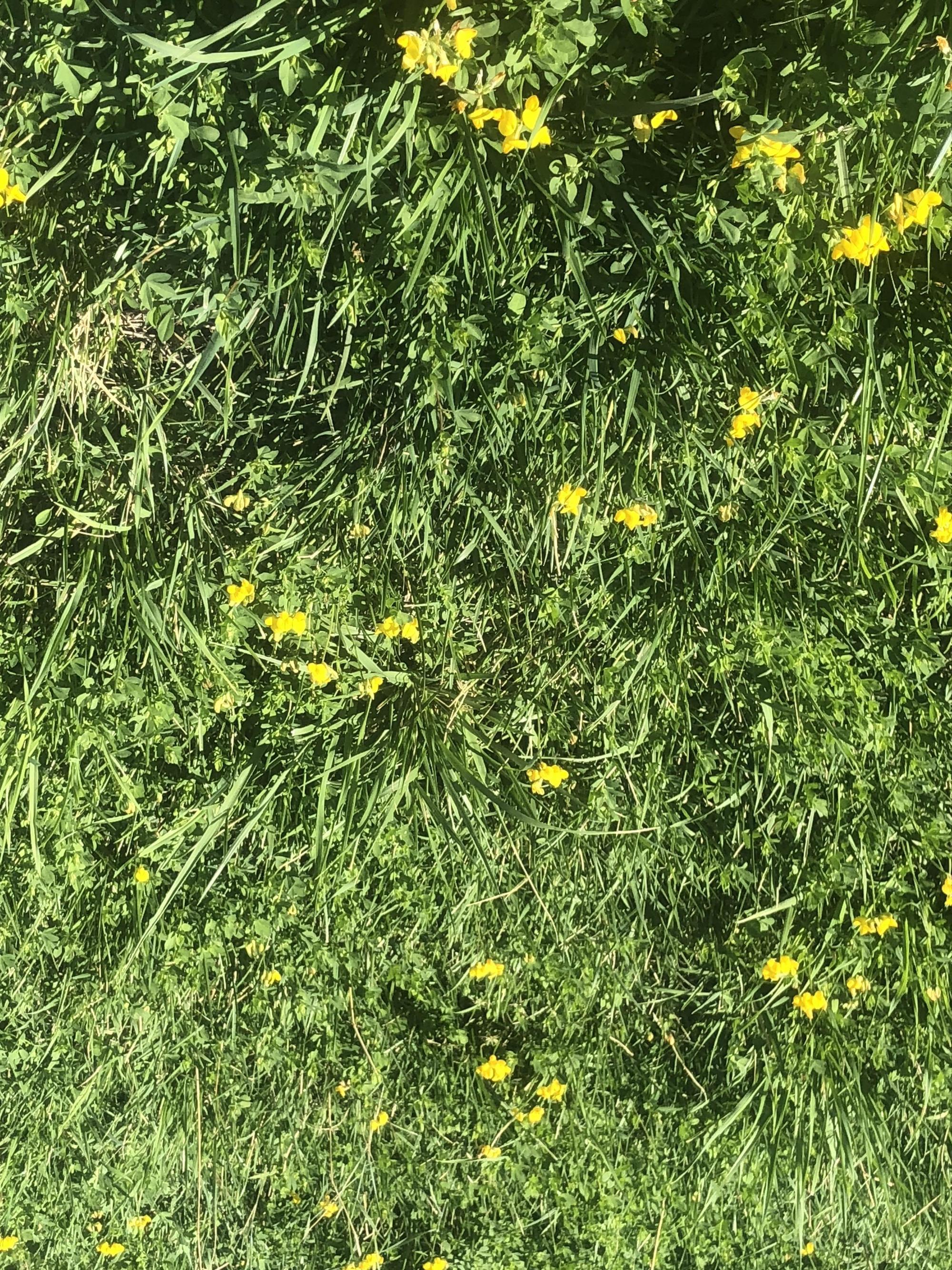Perennial pastures from the high desert region of Oregon to the Intermountain West are made up primarily of grasses, with few legumes. Alfalfa and clover varieties, common legume pasture additions, may cause frothy bloat in grazing livestock. And alfalfa needs deep, well-drained soils to become established. Nitrogen-deficient pastures in the West can benefit from other legumes for complementary grasses.
Birdsfoot trefoil is a moderately long-lived herbaceous perennial forage legume that does not cause bloat. It is suitable in permanent pastures or as a hay crop, alone or in combination with grasses. It is highly palatable and digestible, and has a high percentage of rumen bypass protein. It is valued for condensed tannins, which help combat parasites. It is tolerant of strongly acid soils (pH 5.1), although maximum yields are produced at pH 5.8 or higher. It is moderately tolerant of high alkalinity and saline conditions (1.5–3 dS/m)
Birdsfoot trefoil was introduced from Europe and is now extensively grown in humid, temperate regions of the U.S. (USDA Plant Hardiness Zones 4–8 with 25–40 inches of precipitation or irrigation per year). Once established, it can tolerate moderate drought, although its root system is not as deep as that of alfalfa and is more highly branched in the shallower soil depths. Birdsfoot trefoil pasture yields are 50%–80% when compared with alfalfa. Birdsfoot trefoil is highly tolerant of waterlogged soil. Birdsfoot trefoil is most often chosen for marginal lands or as part of a grass-legume pasture mixture.
Birdsfoot trefoil has five nearly hairless leaflets; the central three are held well above the others. Stems are usually hairless and solid green to reddish-green, 2 to 3 feet long, and arise from a basal crown. Branches arise from the leaf axils. The yellow flowers occur in groups of two to eight (mostly three–five) and are approximately 0.4 to 0.6 inches long (Figure 1). Pods are usually brown, long and cylindrical in shape, 0.6 to 1.6 inches in length. Pods shatter to disperse seed as they ripen. The pod arrangement resembles a “bird’s foot,” hence its common name (Figure 2).
Birdsfoot trefoil can be slow to establish and does not compete well with existing vegetation. Mow or graze pastures to 2–3 inches before interseeding this plant. Timing of interseeding is critical for success. Cool-season grasses grow vigorously until early summer, after which they enter a heat-induced dormant phase. In a pilot study in Lake County, Oregon, interseeding birdsfoot trefoil on June 13 just after the pasture was grazed reduced competition from existing cool-season grasses and resulted in successful establishment under irrigation (Figure 3).
For best establishment and productivity, submit a soil sample for analysis before fertilizing new seed. If required, nitrogen may be added into low-organic-matter soils at no more than 30–40 pounds per acre.
Birdsfoot trefoil seeds are very small, with an average of 375,000 seeds per pound. Thus, a shallow seeding depth is recommended: ¼ inch in loam or clay soils to ½ inch in sandier soils. A seeding rate of 8 to 10 pounds per acre is sufficient when drilling Birdsfoot trefoil into existing pastures. A no-till drill is highly effective if used correctly. You may use the legume seed box, but adjust settings appropriately so that the tiny seed of birdsfoot trefoil falls at the correct rate. Set packer wheels lightly for seed-to-soil contact. Prior to planting, seed should be inoculated with Rhizobium loti (cross-inoculation group K) to ensure nodulation and nitrogen fixation.
Over 25 birdsfoot trefoil cultivars exist, but many of them are more available in the eastern part of the U.S. where trefoil has been planted more extensively. Further research is needed to evaluate cultivars for their suitability for Northwest conditions.
Advantages of birdsfoot trefoil in a pasture system
- A high-quality, nonbloating forage in pasture systems.
- Tolerant of low soil pH and poor drainage in lands not suitable for alfalfa.
- Establishment can occur in new and existing perennial pastures with proper timing of seeding.
- As a legume, it fixes nitrogen, making it a valuable contributor to perennial grass-dominated pasture systems.
- Highly bioactive compounds, such as condensed tannins, in this plant can help reduce parasites and greenhouse gas emissions.
Birdsfoot trefoil for grazing or haying
Graze or hay birdsfoot trefoil for a high-quality forage for cattle and sheep. In a study conducted by Oregon State University Extension in Lake County, drilling birdsfoot trefoil into an existing grass pasture resulted in a dry matter increase of 150% and higher overall quality after three years (Table 1).
| Quality parameters | Birdsfoot trefoil | Perennial pasture |
|---|---|---|
| Forage production, lbs dry matter/acre |
2,230 | 1,322 |
| 2230 | 21.1 | 9.4 |
| 1322 | 21.3 | 26.5 |
| Neutral detergent fiber % | 35 | 52.4 |
| Ether extract (fat content) % | 2.5 | 2.6 |
Sept. 16, 2020, Lake County, Oregon, compared with control (perennial pasture). Note the high forage quality of trefoil even later in the growing season. Perennial pasture was largely composed of meadow foxtail (Alopecurus pratensis L.) and Kentucky bluegrass (Poa pratensis L.).
Birdsfoot trefoil does not induce bloat as alfalfa or clovers do because of its condensed tannin content. It is an excellent bypass protein source for ruminants due to the mechanism of tannin loosely binding proteins and preventing entire ruminal breakdown. Birdsfoot trefoil’s anthelmintic properties and secondary metabolites make this crop useful, particularly in organic farming systems in which pharmaceutical worming agents are not used.
Researchers at Utah State University reported that compared with feeding alfalfa hay, adding birdsfoot trefoil to dairy diets reduced nitrogen in urine, shifting it to feces. This reduction in urinary nitrogen was attributed to the condensed tannins in birdsfoot trefoil hay. This is important to reduce nitrate leaching problems in pastures and ammonia emissions in confined systems.
The condensed tannin concentration in birdsfoot trefoil resulting in greater bypass protein has been shown to increase ruminant milk production by 14% to 21%. Planting birdsfoot trefoil can result in higher beef weight gains, as a study conducted by Utah State University demonstrated; yearling beef steers gained 1.2 pounds per day on grass pastures, and 2.1 pounds per day when grazing birdsfoot trefoil pastures.
Good grazing management increases yield and stand persistence. Leave a minimum of 4 inches stubble height. Birdsfoot trefoil regrowth originates from buds which are formed in leaf axils. Allow plants to regrow to 8 to 10 inches or more before returning to graze. Throughout the growing season from spring through summer, this varies from a 24- to 38-day rest/regrowth period. Allowing a 60-day rest period every few years will allow seed to mature and thicken the stand with new seedlings.
In summary, interseeding birdsfoot clover into new or existing perennial grass pastures can result in higher quality forage for grazing ruminants, improve beef live weight gains and milk production, provide a natural anthelmintic, reduce nitrogen fertilizer, improve soil health and add to pasture diversity.
References and resources
- Bush, T. Birdsfoot Trefoil. 2002. U.S. Department of Agriculture, Plant Fact Sheet.
- Ghelichkhan, M., J.S. Eun, R.G. Christensen, R.D. Stott and J.W. MacAdam. 2018. Urine volume and nitrogen excretion are altered by feeding birdsfoot trefoil compared with alfalfa in lactating dairy cows. Journal of Animal Science 96(9): 3993-4001.
- Grabber, J.H., H. Riday, K.A. Cassida, T.C. Griggs, D.H. Min and J.W. MacAdam. 2014. Yield, Morphological Characteristics, and Chemical Composition of European- and Mediterranean-Derived Birdsfoot Trefoil Cultivars Grown in the Colder Continental United States. Crop Science 54: 1893–1901.
- Hall, Marvin H. and Jerry H. Cherney. 1993. Birdsfoot Trefoil. Penn State Cooperative Extension. Agronomy Facts 20.
- MacAdam, J.W., and J.J. Villaba. 2015. Beneficial Effects of Temperate Forage Legumes that Contain Condensed Tannins. Agriculture 5: 475-491.
This material is based upon work supported by the National Institute of Food and Agriculture, under award number 2019-38640-29880 through the Western Sustainable Agriculture Research and Education program. USDA is an equal opportunity employer and service provider. Any opinions, findings, conclusions, or recommendations expressed in this publication are those of the author(s) and do not necessarily reflect the view of the U.S. Department of Agriculture.
Trade-name products and services are mentioned as illustrations only. This does not mean that Oregon State University Extension Service either endorses these products and services or intends to discriminate against products and services not mentioned.





